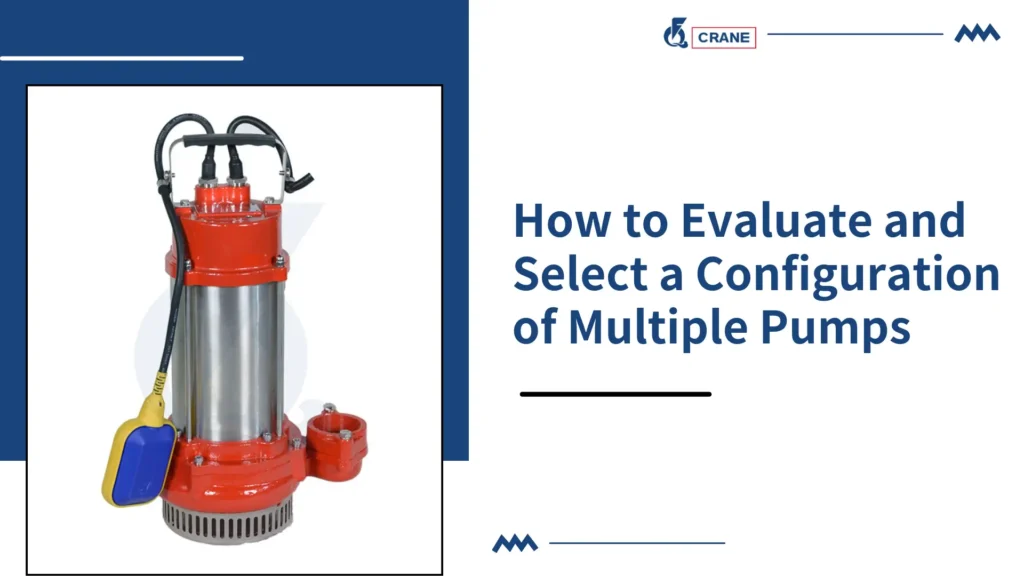When it comes to using pumps for moving fluids in like, factories or businesses, having the right setup with a bunch of pumps is super important. It’s like trying to figure out the best squad for your dodgeball team, but for moving water or stuff like that.
Choosing the right pump squad can be really tough, especially if you’re not a techy person who gets all the fancy terms. That’s why I’m here to write a simple guide to help you out. It’s like a cheat sheet for picking the best pump setup, so you don’t have to go through a ton of boring manuals and stuff.
This article is gonna break it down into easy steps, so you can totally get what you need without stressing too much. We want to make sure you know what to look for when you’re shopping around, so you can pick the best pump setup for your place and not blow all your cash.
Also Read:
What Factors Affect the Efficiency of Submersible Pumps?
What Are the Key Applications of Multiple Pump Configurations?
Industrial Processes
In industries such as manufacturing, chemical processing, and oil and gas, multiple pumps are essential for maintaining consistent fluid flow and pressure.
These systems often handle large volumes of liquids or gases, and a single pump may not suffice to meet the demands of complex processes.
Multiple pumps can be configured to work together, ensuring that production lines run smoothly and efficiently.
Additionally, they provide redundancy, which is critical in industries where downtime can lead to significant financial losses.
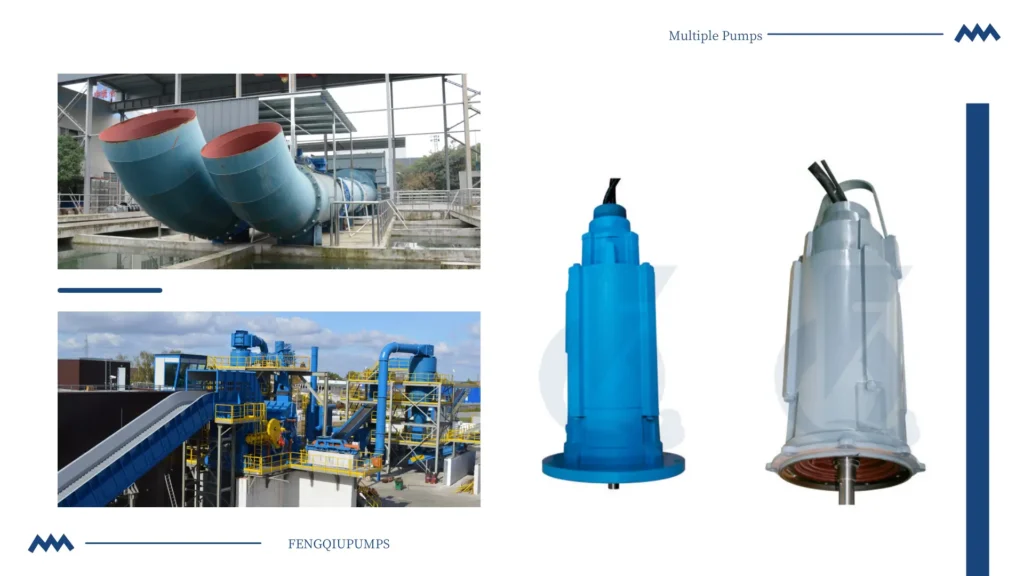
Water Management Systems
Water treatment plants, the stuff that makes sure you can water your plants and not flood your streets, really need a bunch of pumps.
Sometimes people need more water, like when it’s super hot or when it’s raining cats and dogs.
Having more pumps means you can give people the water they need without any breaks.
It’s like having extra helpers on a busy day. For instance, in the summer when everyone’s watering their lawns, you can turn on more pumps to get water to everyone without a problem.
HVAC Systems
Heating, ventilation, and air conditioning (HVAC) systems use multiple pumps to circulate water or coolant efficiently.
These systems are designed to maintain optimal temperature control in large buildings or industrial facilities.
By configuring pumps in parallel or series, HVAC systems can distribute fluids evenly, ensuring consistent heating or cooling throughout the space.
This not only improves comfort but also enhances energy efficiency by reducing the workload on individual pumps.
Why Is Pump Configuration Important?
Efficiency and Performance
The way you set up your pumps can really make a big difference in how well your system works and how much it costs to run.
If you’ve got a bunch of pumps working together, you want to think about how they’re arranged.
If you need a system that can pump a lot of fluid fast, like in a big industrial setup, putting the pumps side by side, or in parallel, is usually the best bet.
But if you’re dealing with situations that need a lot of pressure, like pushing fluid uphill or through tight pipes, you might want to line them up one after the other, in a series.
Doing it right means your pumps are happy and running at their best, which keeps your energy bill from going through the roof.
If you don’t, you could end up with pumps that are working too hard and breaking down more often, which means more money spent on fixing them and less time for them to do their job.
System Reliability
You can’t put a price on a system that you can count on, especially when it comes to moving fluids around.
If you’ve got a smart setup with your pumps, it’s like having a backup plan in case something goes wrong.
This is huge for places like factories or water plants, where if a pump stops working, everything comes to a screeching halt, and that can cost a ton of money or even be dangerous.
For example, if you’re treating water and one pump goes kaput, you don’t want the whole town to be left dry.
Having a spare pump ready to jump in is a lifesaver. This way, even if something breaks, you can keep things running smoothly without any big interruptions.
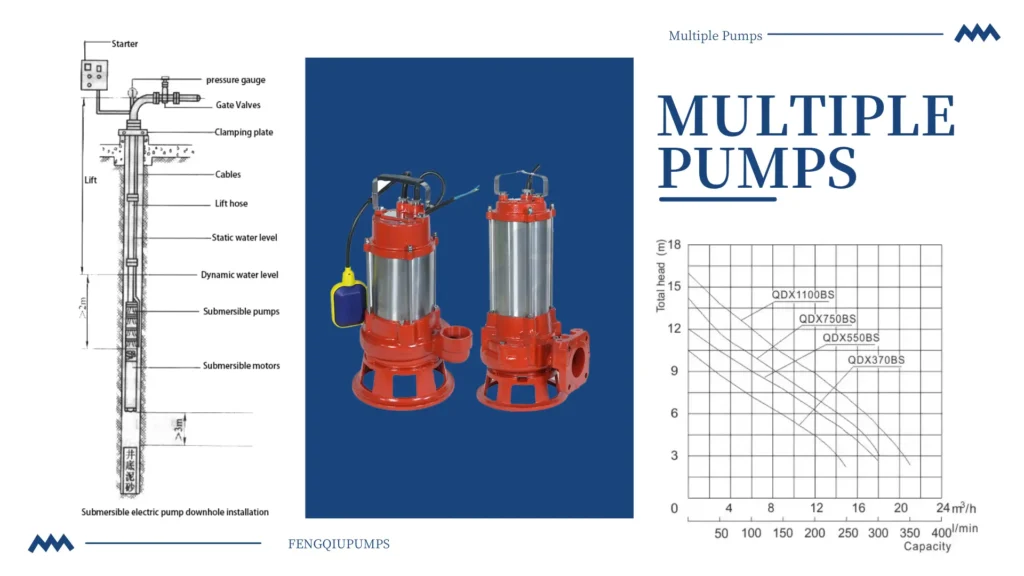
Scalability
As your business grows, you’re going to need more oomph from your pumps. A well-thought-out system can grow with you without breaking the bank or causing a lot of headaches.
So, let’s say you’re adding more buildings to your facility, or you’re just moving more fluid than before.
You can easily add more pumps to your existing setup if you have them in parallel. That way, you can keep up with the demand without having to start from scratch every time.
Scaling up your system like this keeps things flexible and cost-effective. It’s like having a system that can stretch and bend without breaking, so it can keep up with whatever you throw at it in the future.
What Types of Pump Configurations Are Available?
Series Configuration
In a series configuration, pumps are connected sequentially, with the output of one pump feeding into the input of the next.
This setup is ideal for applications requiring high pressure, such as in long-distance pipelines or high-rise building water supply systems.
The combined pressure of multiple pumps working in series ensures that fluids can be transported over greater distances or to higher elevations.
Parallel Configuration
In a parallel configuration, pumps operate simultaneously, sharing the workload.
This setup is suitable for applications requiring high flow rates, such as in large-scale irrigation or cooling systems.
By distributing the load across multiple pumps, the system can handle higher volumes of fluid without overburdening any single pump.
This not only improves efficiency but also extends the lifespan of the equipment.
Standby Configuration
A standby configuration includes a primary pump and a backup pump that activates only when the primary pump fails.
This setup is commonly used in critical applications where uninterrupted operation is essential, such as in hospitals or data centers.
The standby pump ensures that the system continues to function even during maintenance or unexpected failures, providing peace of mind and reliability.
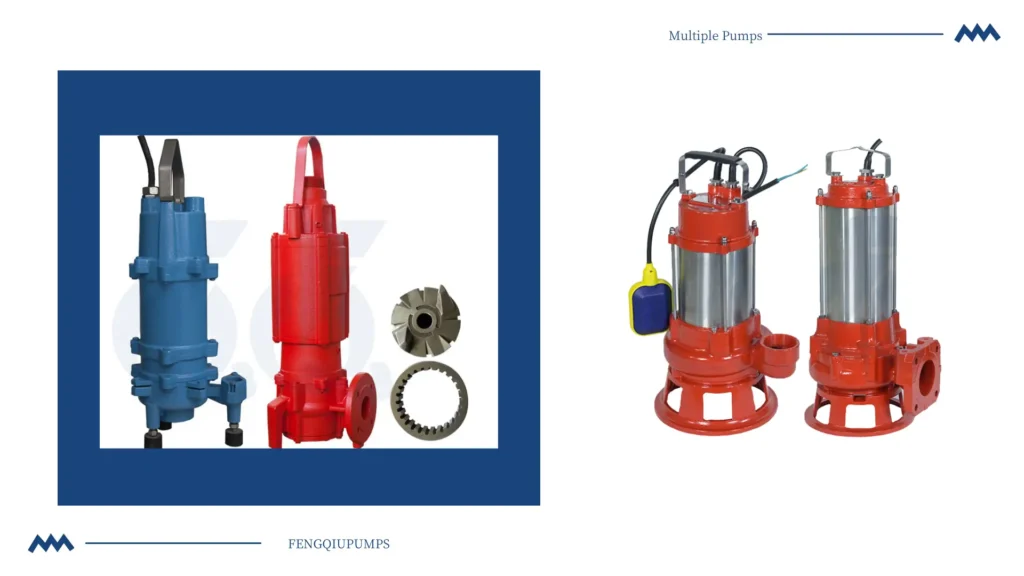
What Factors Should You Consider When Selecting a Configuration?
Flow Rate and Pressure Requirements
The first step in selecting a pump configuration is understanding your system’s flow rate and pressure requirements.
Flow rate refers to the volume of fluid that needs to be moved, while pressure refers to the force required to move it.
For example, a high-rise building’s water supply system may require a series configuration to achieve the necessary pressure, while a large-scale irrigation system may benefit from a parallel configuration to handle high flow rates.
Energy Efficiency
Energy efficiency is a key consideration, as it directly impacts operational costs.
Different pump configurations have varying energy consumption levels. For instance, a parallel configuration may consume more energy during low-demand periods if all pumps are running.
To optimize energy use, consider configurations that allow for variable speed operation or the ability to shut down pumps when not needed.
Maintenance and Operational Costs
The ease of maintenance and potential operational costs should also be factored into your decision.
Some configurations, such as standby setups, may require more frequent maintenance to ensure the backup pump is always ready for use.
Additionally, consider the cost of spare parts and the availability of technical support when selecting a configuration.
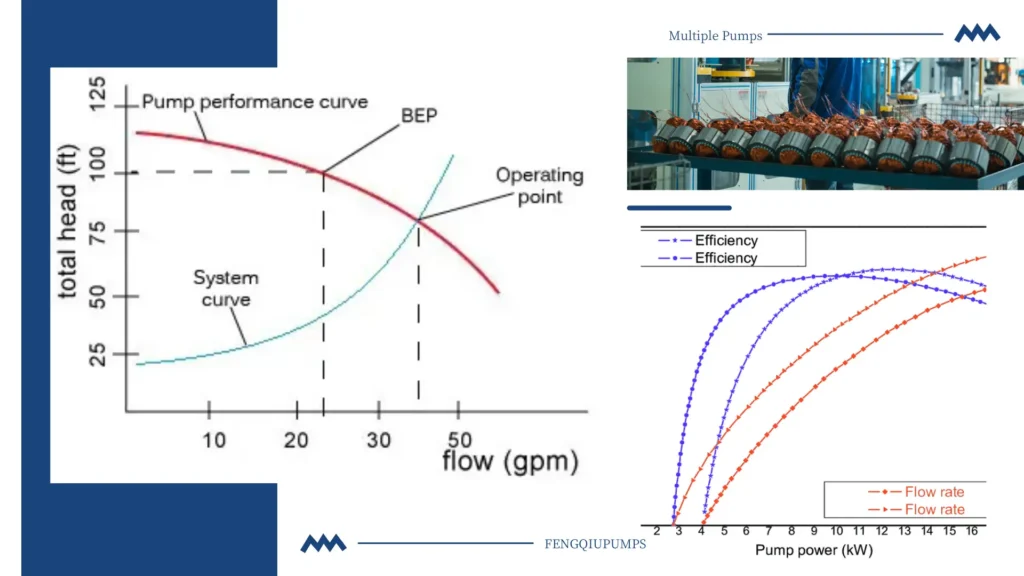
What Role Does Pump Material Play in Configuration Selection?
Compatibility with Fluids
The material of the pump must be compatible with the type of fluid being transferred.
For example, corrosive fluids may require pumps made from stainless steel or other resistant materials.
Using incompatible materials can lead to corrosion, leaks, or pump failure, resulting in costly repairs and downtime.
Durability and Longevity
High-quality materials ensure that pumps can withstand harsh operating conditions, such as high temperatures or abrasive fluids.
Durable materials not only extend the lifespan of your pumps but also reduce maintenance requirements and operational costs.
Cost vs. Performance
While premium materials may come with a higher upfront cost, they often offer better performance and longevity, making them a cost-effective choice in the long run.
Balance the initial investment with the expected performance benefits to make an informed decision.
How Can Automation Enhance Pump Configurations?
Smart Monitoring Systems
Automated systems can monitor pump performance in real-time, providing alerts for maintenance or potential issues.
For example, sensors can detect changes in pressure or flow rate, allowing operators to address problems before they escalate.
This proactive approach reduces downtime and maintenance costs.
Energy Optimization
Automation can adjust pump operation based on demand, reducing energy consumption and operational costs.
For instance, variable frequency drives (VFDs) can modulate pump speed to match the required flow rate, ensuring that energy is not wasted during low-demand periods.
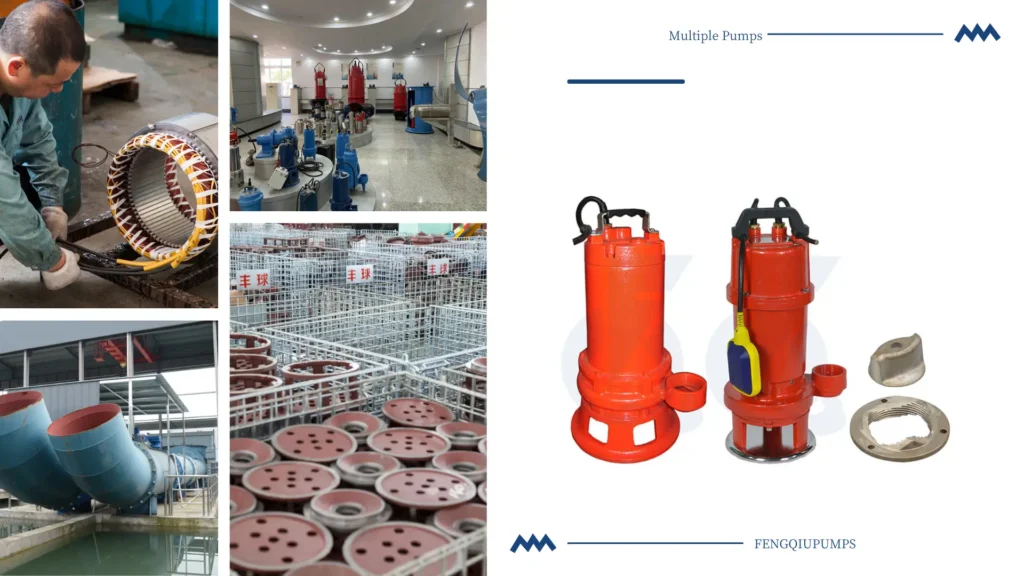
Remote Control and Diagnostics
Advanced configurations allow for remote control and diagnostics, improving convenience and reducing downtime.
Operators can monitor and adjust pump performance from a central location, eliminating the need for on-site inspections and reducing response times to issues.
What Are the Common Mistakes to Avoid When Selecting a Configuration?
Skipping Over System Needs
If you don’t take the time to understand what your system really needs, you might end up with something that doesn’t work as well as it should, or even breaks down completely. Take high-pressure situations, for instance.
If you pick a setup that isn’t up to the job, like a parallel configuration, you could be in for a world of trouble.
So, make sure to match your setup with your system’s flow rate, pressure requirements, and how you’re planning to use it.
Turning a Blind Eye to Maintenance
Choosing a setup that’s a pain to take care of can come back to bite you with extra costs and more time when your system’s not working. Imagine having a bunch of pumps that are really complicated to work on.
You might need some fancy tools or a specialist to help out, which isn’t cheap. Plus, if parts are hard to come by, you might find yourself waiting a while to fix something.
Keep in mind how easy it is to maintain and how quickly you can get your hands on spare parts when you’re deciding what to go with.
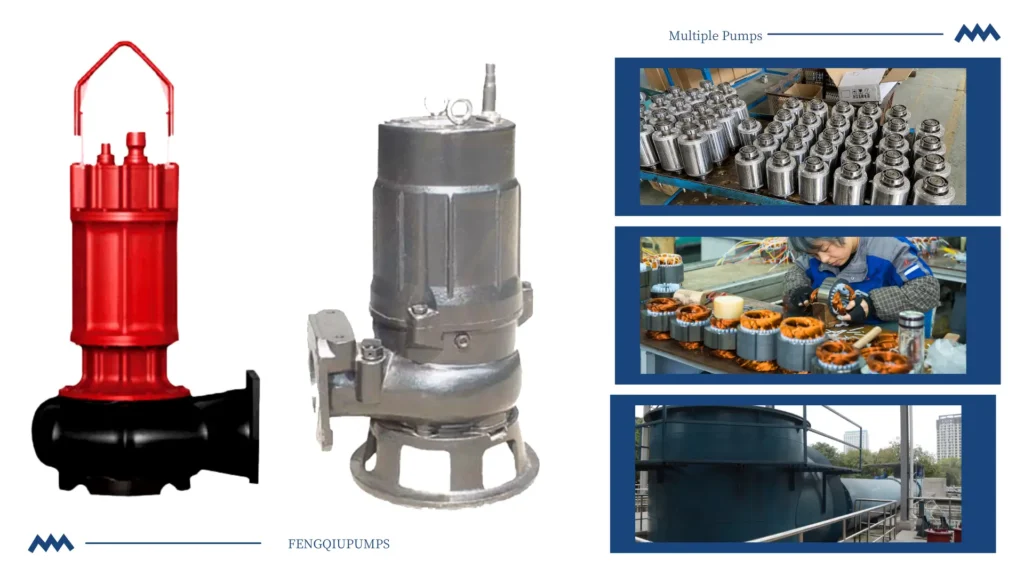
Conclusion
Selecting the right configuration of multiple pumps is a critical decision that impacts the efficiency, reliability, and cost-effectiveness of your system.
By understanding the key factors—such as application requirements, pump types, material compatibility, and automation options—you can make an informed choice that meets your needs both now and in the future.
Take the time to evaluate your options carefully, and don’t hesitate to consult with experts to ensure you get the best possible solution for your specific application.
With the right configuration, you can optimize performance, reduce costs, and ensure the long-term success of your operations.

